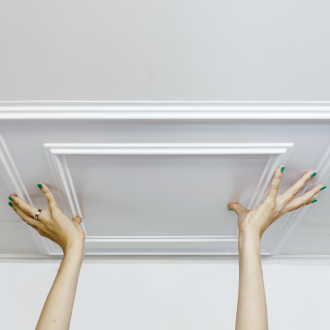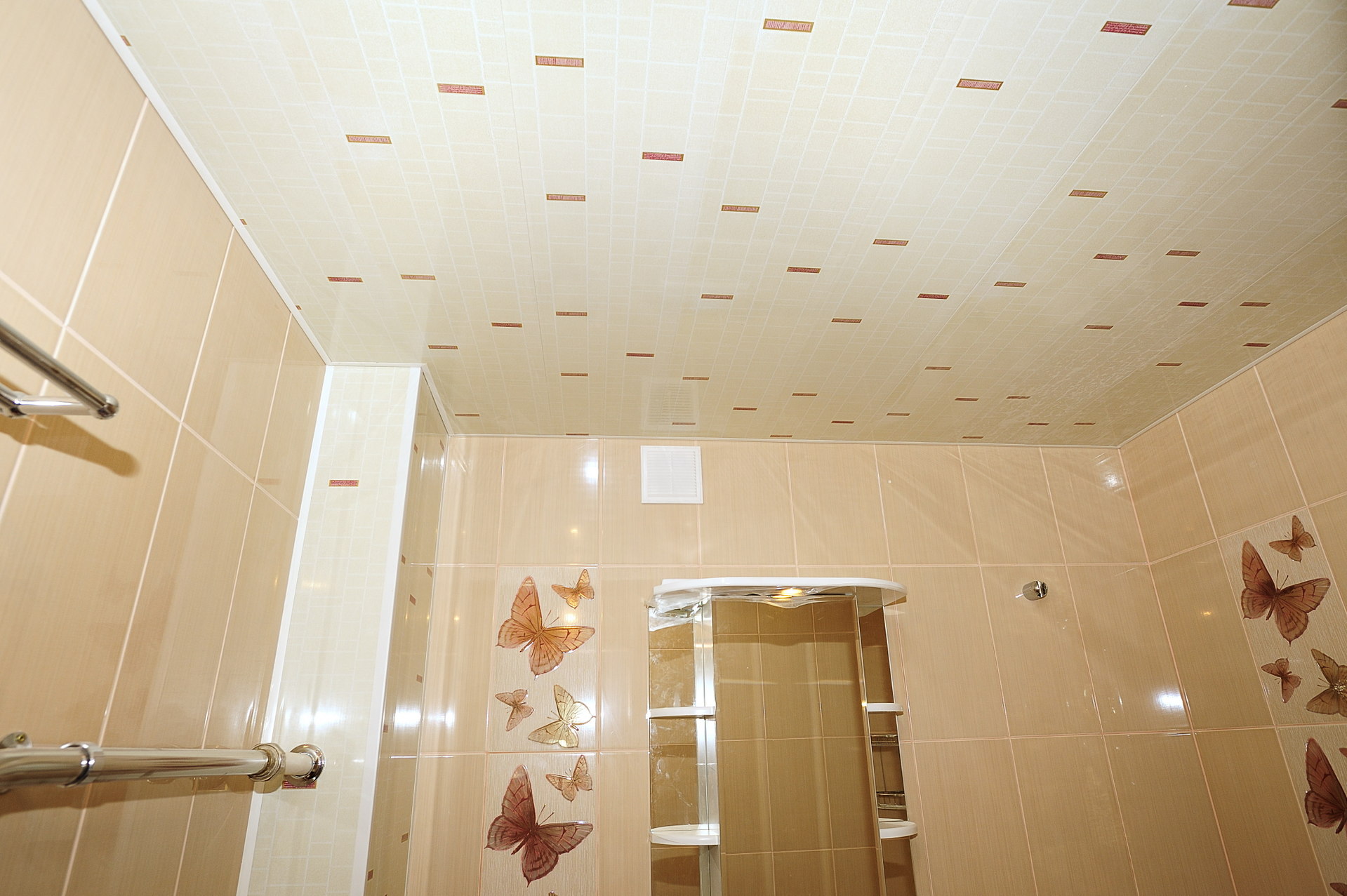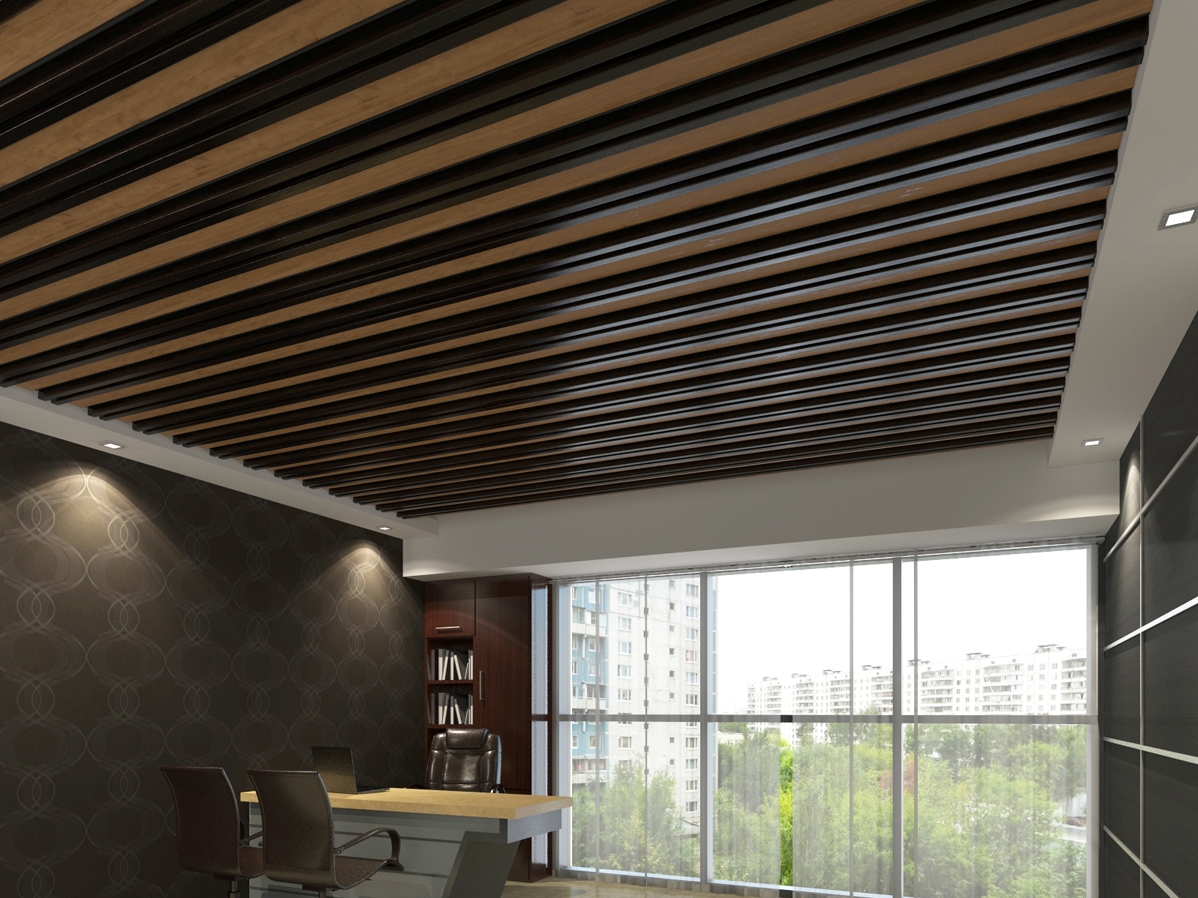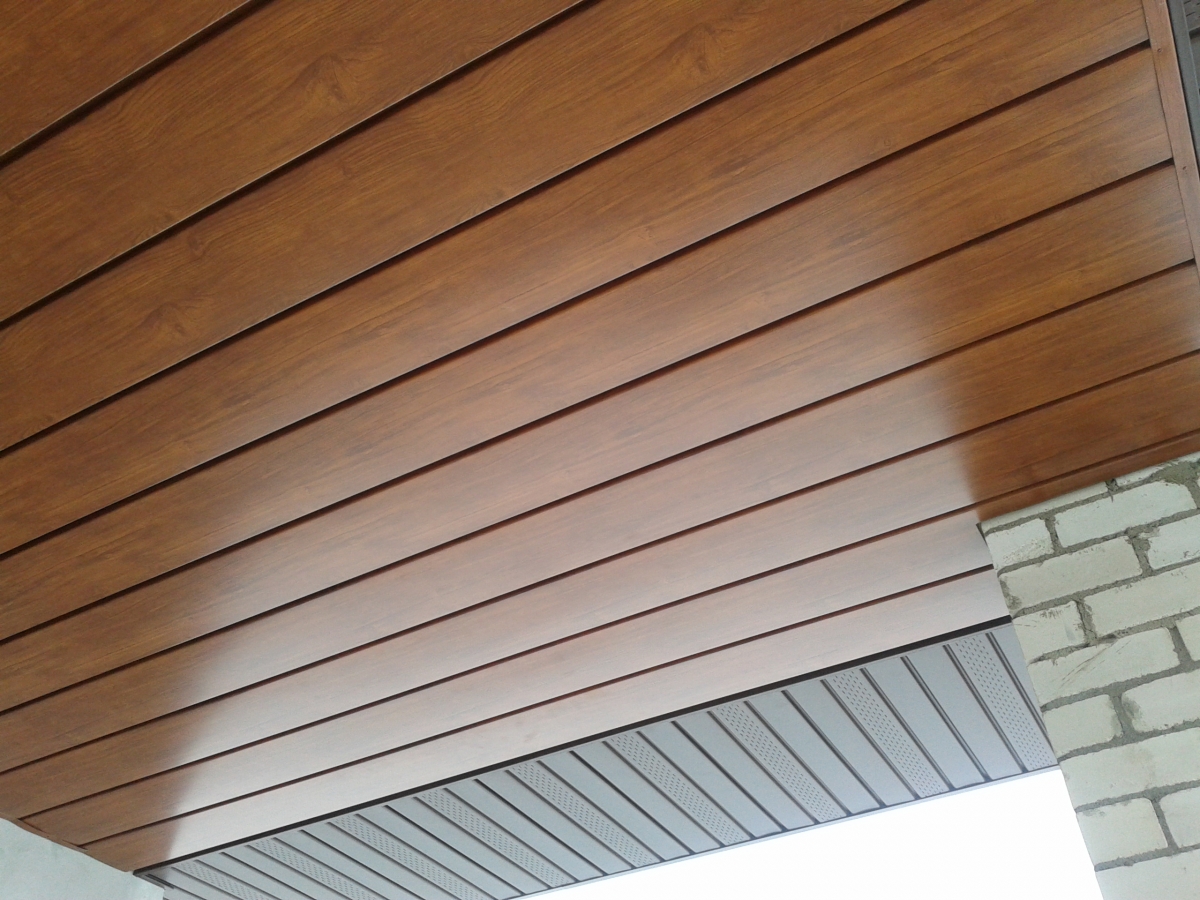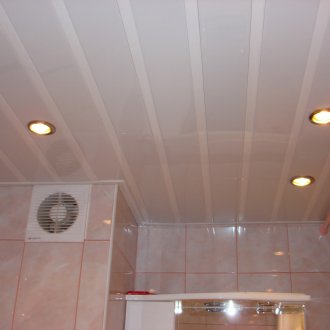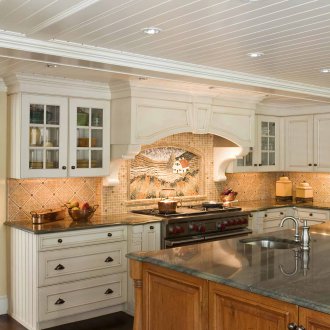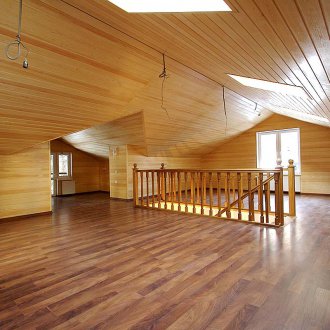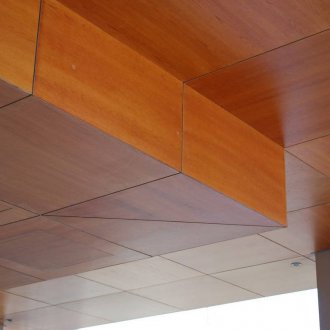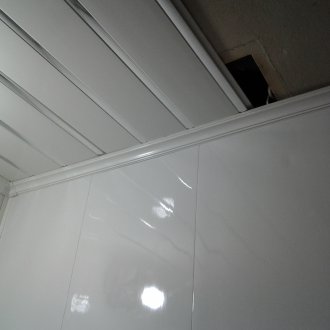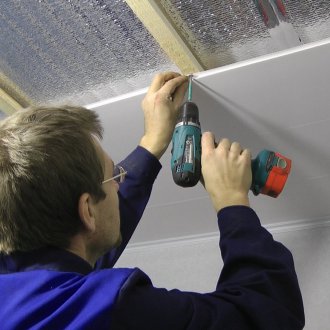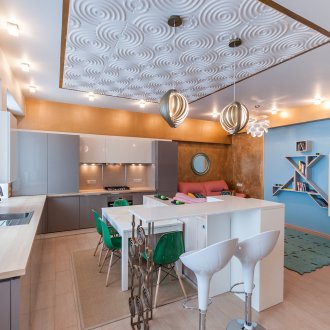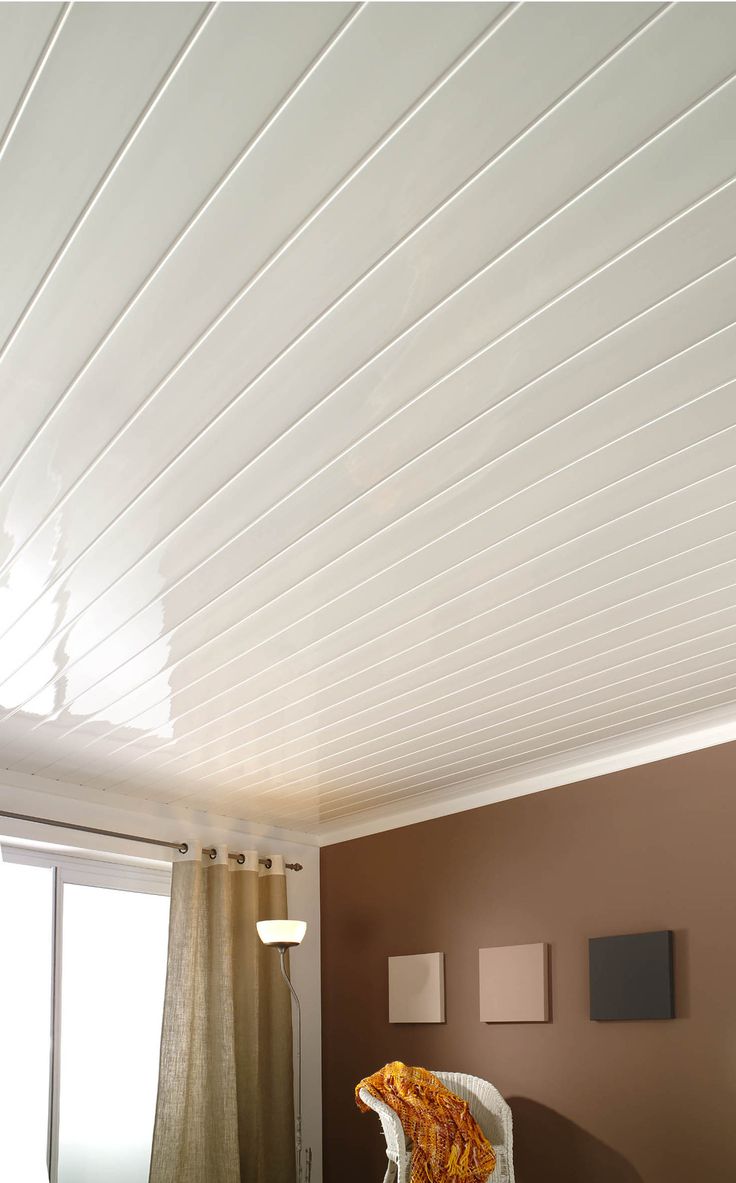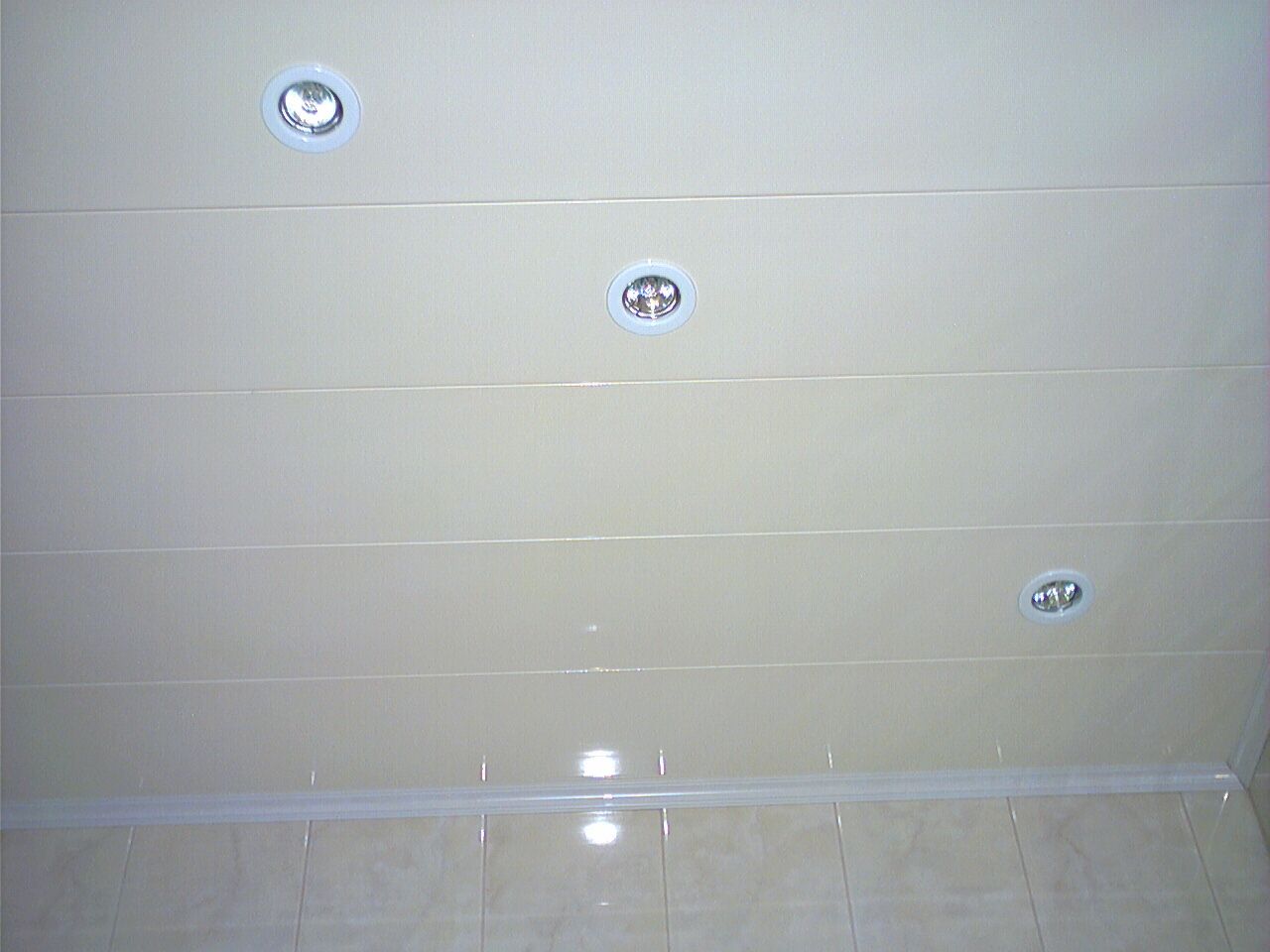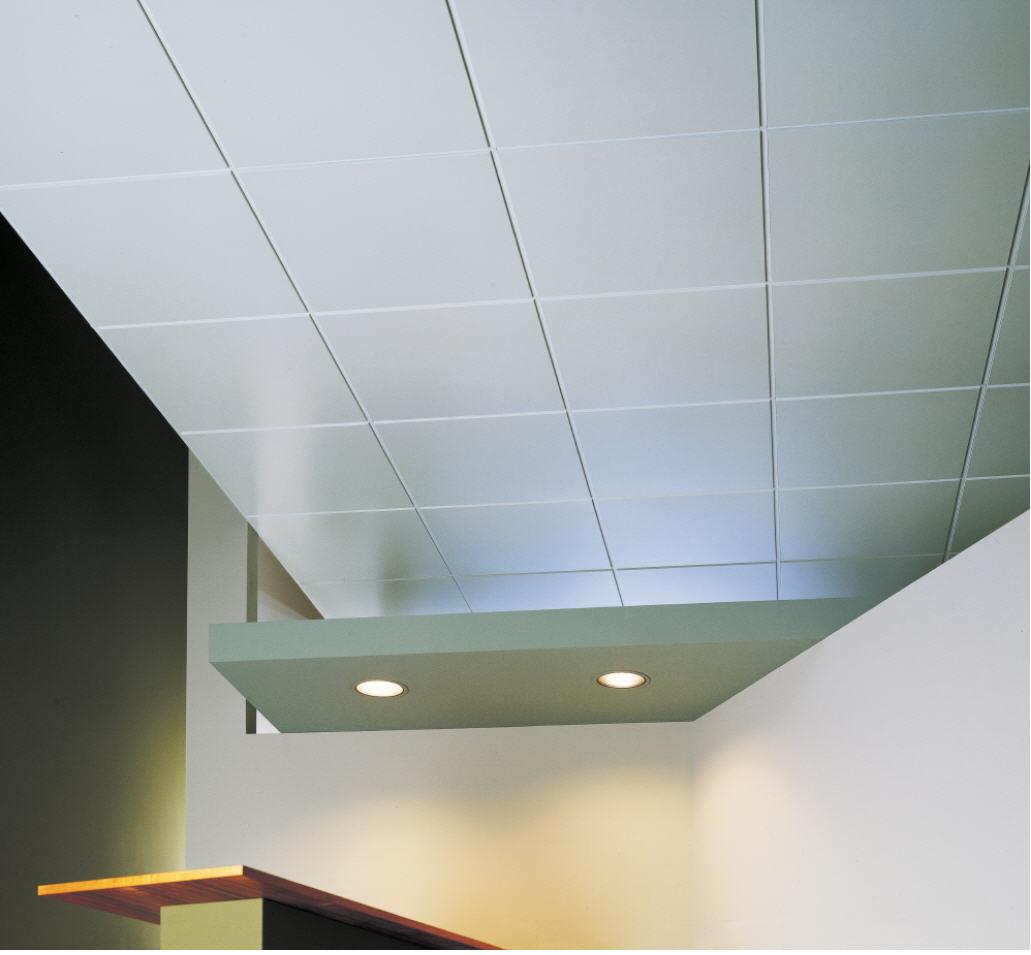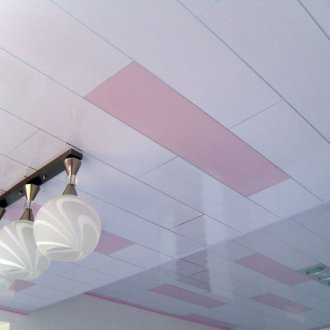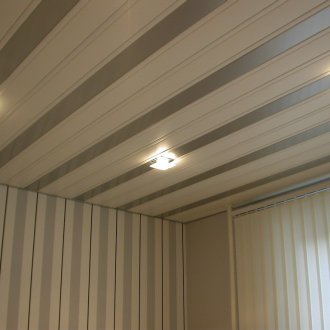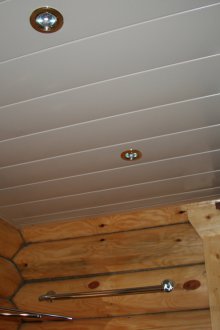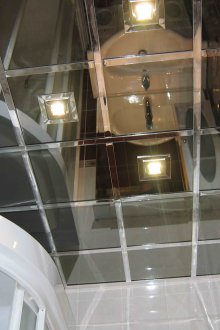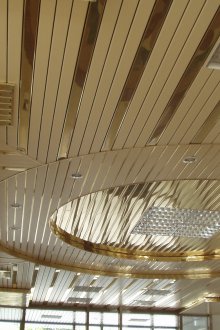Panels for the ceiling: DIY installation (23 photos)
Content
If you started a repair in the apartment, then you probably thought about how to choose the design of the ceilings in each room. So, for example, the ceiling in the hall made of polystyrene foam or the suspended ceiling in the bedroom will look good, but the ceiling in the toilet or the ceiling on the balcony is better to build from PVC panels.
It is better to sheathe the ceilings of kitchens with plastic panels, since in these rooms there is often a lot of moisture, soot and burning, and plastic PVC panels, if necessary, can always be wiped with a rag soaked, for example, in a washing solution. The ceiling of the PVC panels in the bathroom will not deteriorate even if a jet of water gets on it, and the plastic mirror panels for the ceiling will look just gorgeous in this room, especially if it's seamless panels.
Finishing the ceiling with PVC panels, as well as decorating the ceiling with MDF panels, is not too complicated. (For those who do not know, we inform you that MDF is a medium-density fiberboard).
PVC panels, like most types of wood-fiber, including veneered or cork-covered, or veneered panels, are easily cut and easily fixed with rails when installing the ceiling from panels with your own hands.
The foam ceiling in the living room or the ceiling in the corridor made of chipboard with veneer coating is beautiful, but it is better to install a suspended ceiling from plastic panels in the bathroom. Also keep in mind that PVC panels for the ceiling in the kitchen or MDF panels for the ceiling in the corridor would be a more suitable solution if you decide to do repairs.
How to make a ceiling of plastic panels yourself?
For those who do not know what these panels are for suspended ceilings, we inform that these are plastic strips usually 3 or 6 meters long and 25 or 30 centimeters wide. Their short ends are cut off, and the long ones are made in the form of locks, which are a kind of those that are found on laminate plates.
Installation of plastic panels is carried out on a wooden or metal frame from the profile used in the installation of such material as gypsum plaster.
All kinds of finishing plastic panels are hollow inside with stiffeners. Owing to what they possess such characteristics as rather high strength and low weight. In order to sheathe the ceiling with plastic panels, some special profiles are also needed, also made of plastic.
Types of PVC profiles for plastic panels on the ceiling
So, for the installation of a ceiling coating or wall cladding, you must also purchase the following profiles:
- "Start" (necessary in order to close the end of the panels);
- "F-profile" (designed to close the ends of the panels in the corners with transitions to the wall);
- "H-profile" (used to build up PVC panels in length);
- “External corner” and “internal corner” (they are a bit similar, but they are designed in such a way that it is better to use one for closing the ends of the panels at the external and the other at the internal corners);
- “Ceiling plinth” (it is used if the wall is not sheathed but the ceiling is made of plastic panels, and is, in fact, a “refined starting profile);
- “Universal corner” (rarely used, since although it can be used for any angle, the effect obtained from this, from an aesthetic point of view, does not look very impressive).
Next, we will consider how to make a ceiling from PVC panels in the bathroom or a ceiling in the toilet when the walls of these rooms are already covered with tiles, which does not reach the draft ceiling by 5-10 centimeters.
Frame mounting
In the case proposed for consideration, there are two options: you can attach the frame slats above the tile, or you can directly on it. The second method must be immediately ruled out as potentially dangerous, which can lead to damage to the ceramic wall cladding.
As for the first option, an interesting solution is the following: buy Knauf ROTBAND gypsum plaster and apply it over the tile in the form of a narrow strip five centimeters wide, resting on the tile of the finished coating. This can achieve the coincidence of the plane to which the profile will be mounted with the plane of the surface of the cladding.
The guides can be fixed with dowels, nails immediately after the "setting" of the plaster occurs, that is, somewhere after a couple of hours. At the same time, if you are constructing a ceiling in the bathroom from panels or a ceiling on the balcony, then use only galvanized profiles for the frame, as these are places with high humidity.
Panel Mounting
How to fasten PVC panels? Naturally, across profiles. First you need to take the first panel and make it a little shorter (three to five millimeters) than the existing width of the room. You can cut plastic panels with a small hacksaw or a jigsaw, and strip the edges with either a sandpaper or a file, being careful not to crush the panels. Do not forget to also remove the film from the plastic panels before installation, because when assembled, removing a thin film protective coating from them will be a big problem.
Next, we bring into the plastic starting profile the narrow end of the first panel and, slightly curving the panel, we wind the second end on the opposite wall. Then you need to move this panel to the nearest wall and insert it on the wide side into the profile groove on this wall. If necessary, you can use a narrow spatula or knife, taking great care not to damage the material.
How to attach a panel to profiles? Using screws with washers. And you need to do this also very carefully, not forgetting that they assemble the ceiling from panels that are easily damaged even with not very strong mechanical influences. If the bit jumps off the head of the self-tapping screw, it can easily pierce the panel, which after that, most likely, will have to be replaced with a new one. It is recommended that you first drill holes in the profile wall, and screw the screws into them already: this will quickly assemble the ceiling coating from the panels in the kitchen, in the bathroom and in any other room without damaging the material, regardless of whether wooden panels are used for the ceiling or battens or PVC panels for the ceiling.
When all the panels on the ceiling are assembled (docked) except one, it remains to decide how to fix this last panel? We cut it so long that it is only a couple of millimeters less than the distance between the walls, reduced by the width of one fastening profile. Then we insert the panel into one profile until it stops, and we freely insert its dangling end into the second profile without problems, slightly shifting the panel in its direction.
That's all. It is done. The ceiling is assembled. However, the repair is not finished yet, because regardless of whether the ceiling is assembled on the balcony or the ceiling in the bedroom, or the ceiling in the corridor, or the ceiling in the bathroom, it is still necessary to decide how to make holes for the fixtures in it.
They can be cut in advance “on the ground”, having previously calculated in which panel, in which place it is needed, or cut already “in place” using drills or crowns, or even a simple kitchen knife, since the material of PVC panels is very soft and cut easily.
Advantages of PVC Ceilings
If you can’t decide how to sheathe the ceiling in the kitchen or in the toilet, then it’s time for you to find out what you will get if you use PVC plastic panels as a finishing material when repairing these rooms:
- the ability to align the ceiling with defects in its surface of any nature without the need to change the shape of the old coating;
- ease of installation of fixtures of any type;
- the ability to hide various communications under a plastic coating;
- ease of construction (it is lighter both in weight and in installation technology, in comparison with plasterboard ceilings);
- You will improve both sound insulation and thermal insulation of the room;
- you don’t need to use “wet” construction processes (for example, you do not need putty needed for gypsum plasterboard ceilings), you don’t need to sand, paint, etc.
- and the most important advantage when repairing ceilings using PVC panels is that you will create the most moisture-resistant ceiling coating;
- your ceiling will never grow moldy and will not change in any way over the years, even having survived the flood organized by neighbors from above;
- such a ceiling coating can be repeatedly mounted and dismantled.
Are there any disadvantages?
- Multi-level plastic ceilings never assemble: aesthetically not very impressive sight.
- For the most part, plastic panels in any room do not look like a design sophistication or expensive room decoration.
- Between the panels even with the naked eye you can see the joints.
The scope of plastic panels is limited, as a rule, to bathrooms, corridors, loggias and kitchens. Moreover, in these cases, it is possible to use a foam ceiling or a rack metal ceiling made of thin tape based on an aluminum alloy, mounted from so-called rack panels.
